 Technology
Technology  Technology
Technology  Our World
Our World 10 Ways Icelandic Culture Makes Other Countries Look Boring
 Misconceptions
Misconceptions 10 Common Misconceptions About the Victorian Era
 Mysteries
Mysteries 10 Strange Unexplained Mysteries of 2025
 Miscellaneous
Miscellaneous 10 of History’s Most Bell-Ringing Finishing Moves
 History
History 10 Great Escapes That Ended Right Back in Captivity
 Weird Stuff
Weird Stuff 10 Fascinating Things You Might Not Know About Spiders
 Food
Food 10 Everyday Foods You Didn’t Know Were Invented by the U.S. Military
 History
History 10 Odd Things Colonial Americans Kept at Home
 Weird Stuff
Weird Stuff 10 Superstitious Beliefs That Once Consumed Entire Cultures
 Technology
Technology 10 Scientific Breakthroughs of 2025 That’ll Change Everything
 Our World
Our World 10 Ways Icelandic Culture Makes Other Countries Look Boring
 Misconceptions
Misconceptions 10 Common Misconceptions About the Victorian Era
Who's Behind Listverse?

Jamie Frater
Head Editor
Jamie founded Listverse due to an insatiable desire to share fascinating, obscure, and bizarre facts. He has been a guest speaker on numerous national radio and television stations and is a five time published author.
More About Us Mysteries
Mysteries 10 Strange Unexplained Mysteries of 2025
 Miscellaneous
Miscellaneous 10 of History’s Most Bell-Ringing Finishing Moves
 History
History 10 Great Escapes That Ended Right Back in Captivity
 Weird Stuff
Weird Stuff 10 Fascinating Things You Might Not Know About Spiders
 Food
Food 10 Everyday Foods You Didn’t Know Were Invented by the U.S. Military
 History
History 10 Odd Things Colonial Americans Kept at Home
 Weird Stuff
Weird Stuff 10 Superstitious Beliefs That Once Consumed Entire Cultures
10 Of The Deadliest Sieges In History
Sieges are an unavoidable part of warfare, as outnumbered forces are much more likely to be able to defend themselves from a fortified position. However, without proper supplies or adequate weaponry, the soldiers, as well as the civilians, can be slowly destroyed by starvation and disease.
10 Siege Of Szigetvár (1566)
33,000 Killed
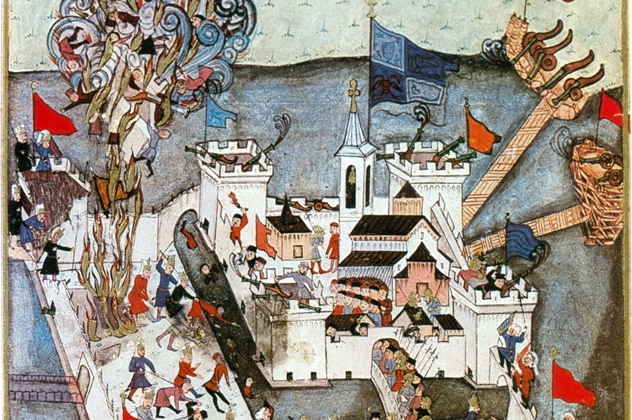
Szigetvár was a fortress on the eastern edge of what was the Holy Roman Empire, and was the scene of Suleiman the Magnificent’s last battle (he was already over 70 years old). With a force of a little less than 3,000 men, the governor of Croatia, Nikola Zrinski, defied the Ottoman orders to surrender, declaring that he would stand as the last defense for Vienna, even though he was outnumbered by about fifty to one.
On August 6, the siege began and Suleiman threw his forces against the city, only to be repelled by the defenses. After a month of fighting, only 300 Croatian soldiers, along with their families, survived. Suleiman offered Zrinski the position of leader of the country if he surrendered, but Zrinski refused, replying: “No one shall point his finger on my children in contempt.”
Realizing the end was near, Zrinski ordered the soldiers to slay their wives and children to spare them the horrors awaiting them if they were captured. The men obliged and, once the deed was done, the Croatians fought to the last man, until the Ottomans overwhelmed the city and mercilessly butchered the remaining survivors. However, Suleiman never saw the victory, for he had succumbed to dysentery four days earlier. In addition, the battle cost the Ottomans nearly 30,000 soldiers, which meant they couldn’t continue their conquest, and they were forced to return home. Though ultimately unsuccessful in protecting the citizens of Szigetvár, this stand by the Croatians is considered by some to be one of the defining moments in Christian history, saving most of Europe from Muslim influence.
9 Siege Of Nuremberg (1632)
40,000–50,000 Killed

Nuremberg, one of the greatest Protestant cities in the world at the time, was also home to one of the bloodiest sieges during the Thirty Years’ War. Swedish forces, led by Gustav Adolf, retreated to the city of Nuremberg because of the pursuit of the Holy Roman army, which was under the command of Albrecht von Wallenstein. Adolf had nearly 150,000 soldiers, over 30,000 more than Wallenstein, but he neglected to bring adequate supplies to the city, which was eventually successfully blockaded by the Holy Roman Empire.
However, Wallenstein didn’t bring enough supplies either, and both armies suffered from starvation and disease, especially typhus. During the nearly-80-day siege, Adolf actually tried to break the other line in the Battle of the Alte Veste (“Old Fortress”), but the maneuver failed and he eventually fled the city once he realized his men would ultimately succumb to starvation. When the dust settled, nearly 40,000 soldiers had perished, though most of them had been killed by disease rather than the sword.
8 Siege Of Kiev (1240)
48,000 Killed
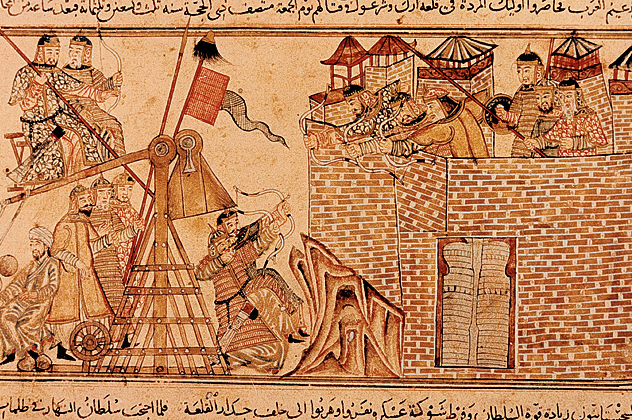
Kiev, one of the oldest cities in Europe and the capital of modern-day Ukraine, was home to one of the most savage sieges ever undertaken by the Mongol hordes. Batu Khan, grandson of Genghis Khan, initially sent envoys to the city, demanding its surrender. Voivode Dmytro, who was appointed as the leader of the city’s resistance, ordered the execution of the messengers, angering Khan. On November 28, the Mongols began their siege of the city, beginning with several days of catapult bombardment.
On December 5, the walls of the city were breached and Khan and his army flooded into Kiev, slaughtering everyone as they went. A large number of civilians fled to the Church of the Tithes, built nearly 300 years prior, but it collapsed and killed many of them. Out of 50,000 inhabitants, only 2,000 survived the battle, including Dmytro, who was spared by Khan because of the courage he showed. By December 6, the Mongols were done sacking the city and they departed, leaving behind an unbelievable amount of destruction. Archbishop Giovanni da Plano Carpini, arriving six years after the siege, wrote: “this city had been extremely large and very populous . . . now it has been reduced to nothing.”
7 Siege Of Ostend (1601–1604)
Over 65,000 Killed
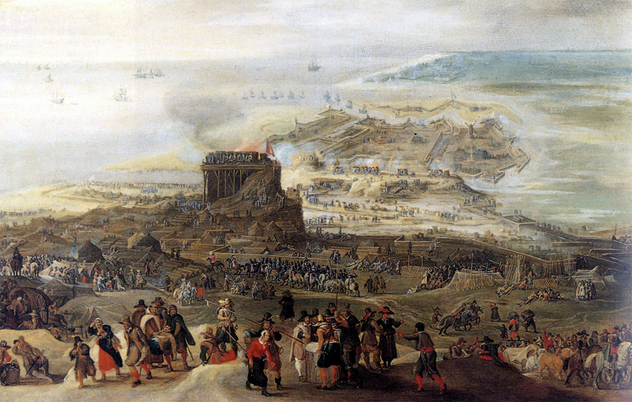
Ostend, located in present-day Belgium, was home to one of the longest sieges in history, as well as the bloodiest battle of the Eighty Years’ War. Recently fortified, Ostend represented a great place to defend, and the combined Dutch and English forces under the leadership of General Francis Vere felt great about their chances against Spain and Archduke Albrecht. The siege commenced on July 5, with the defenders eventually having nearly 50,000 men at their command. The Spanish, on the other hand, had a horde numbering close to 80,000 soldiers, with most on foot.
As the siege dragged on, both sides began to turn to more treacherous acts to try and expedite the finish. Albrecht almost successfully convinced a traitor to help turn some of the more persuadable soldiers against Vere, but the plot was found out and he was whipped out of town. Vere himself was accused of leading Spain into a false negotiation of peace, pulling out at the last moment, although it may have just been a simple misunderstanding on Albrecht’s side.
After a long and bloody siege, the Dutch and English forces surrendered on September 20, and Albrecht triumphantly entered the city with his wife Isabella, who wept at the destruction she witnessed. Shortly thereafter, negotiations opened up and a 12-year truce was established.
6 Siege Of Baghdad (1258)
Over 200,000 Killed
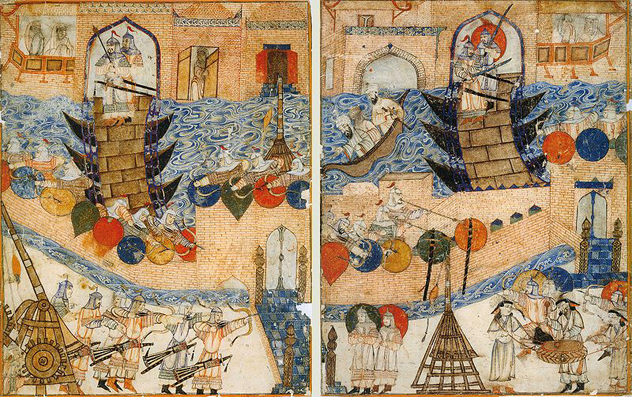
Unsurprisingly, another Mongol siege makes the list. This time the horde was led by Hulegu Khan, another of Genghis Khan’s grandsons, and his siege took place against the city of Baghdad, Iraq. Determined to eradicate what he perceived to be the biggest threat to his rule, Khan intended to destroy one of the largest and most well-known cities of Islam. More than 100,000 Mongols marched on Baghdad after its caliph, Al-Musta’sim, refused to surrender. The Monguls were aided by Shiite Muslims, who were offended by Musta’sim. The siege began on January 29 and it officially ended on February 10.
Once the Mongols entered the city, they wantonly slaughtered everyone in sight, except for Baghdad’s Christians, who were cordoned off in a church by Khan (or perhaps his wife). Musta’sim was said to have been rolled up into a carpet and trampled to death by a horse. The House of Wisdom, one of the most prominent intellectual centers of its time, was especially targeted by Khan for destruction. An inestimable amount of knowledge was lost during the sacking, as the Mongols threw nearly every book in the city into the river. It was said by witnesses that so many writings were in the Tigris that a horse could walk across it.
5 Siege Of Sevastopol (1854–1855)
Over 200,000 Killed
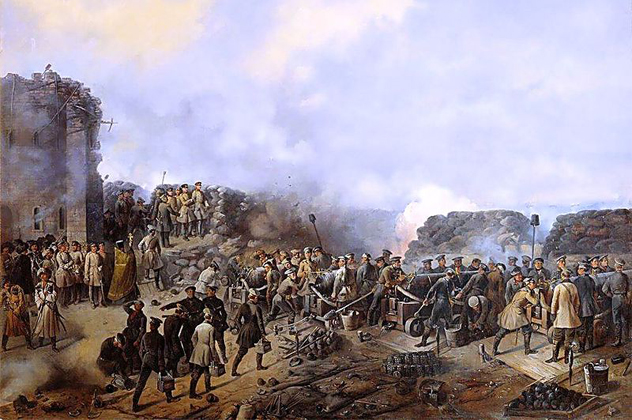
Taking place during the Crimean War, the Siege of Sevastopol pitted a combined force of British, French, and Turkish troops against the Russian army. Featuring some of the earliest examples of trench warfare, the siege was an 11-month-long struggle for survival on both sides. Once the Russians realized they couldn’t defeat their opponents in open battle, they diverted most of their troops to the city and entrenched themselves in defensive positions. For a while, the battle raged during the day. The Russians were taking damage via bombardment, then refortifying their positions each night.
Unfortunately for the siegers and the besieged alike, the winter was extremely harsh and many men on both sides succumbed to disease, namely cholera and dysentery. It affected the French army most of all; nearly all of their casualties were due to the illnesses the soldiers contracted. After successfully defending the fortress, the Russians were eventually forced to retreat, allowing the allied forces to enter the city on September 9. The war ended shortly afterward. A number of artists tried to memorialize the siege, with Lord Tennyson’s poem “The Charge of the Light Brigade” probably among the most famous examples.
4 Siege Of Tenochtitlán (1521)
Over 200,000 Killed
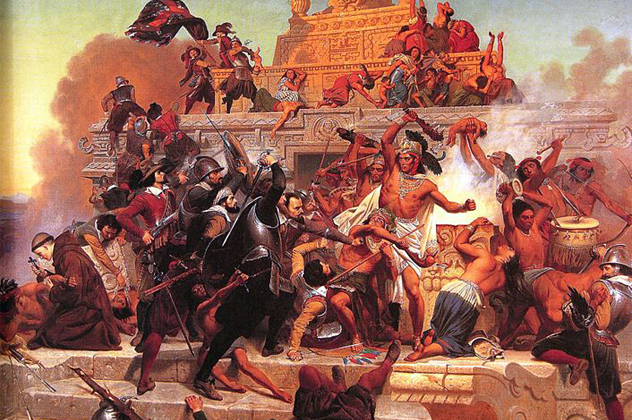
The siege of Tenochtitlán was the final, decisive battle between the defending Aztecs and the Spanish army, which was composed almost entirely of indigenous people who were angry at being oppressed. Hernán Cortés led his 200,000-man army against Tenochtitlán, the Aztec capital, determined to obliterate the Aztecs in order to claim the land and riches for Spain. The defending forces numbered nearly 300,000. However, the Spanish forces held a considerable technological edge, which helped turn the tide of battle in their favor.
For a while, it seemed as though the Aztecs would prevail, but their forces were stricken with a smallpox epidemic which severely weakened their defenses. Realizing a door-to-door invasion was impractical, Cortés bombarded the city, destroying nearly every building with his cannons until the Aztecs surrendered. The siege itself lasted a mere three months but resulted in a large number of deaths, especially among the civilians of the city, which may account for half of the total casualties.
As a side note, many believe that Montezuma and the Aztecs believed Cortés was the reincarnated form of their god Quetzalcoatl; however, most scholars believe that Montezuma, as well as many of his advisers, were fully aware that Cortés was just a man.
3 Battle Of Carthage (149–146 BC)
Over 460,000 Killed

Carthage, one of the most powerful cities in existence prior to the creation of the Roman Empire, was besieged by the Romans in one of their bloodiest battles. Attacked in three separate wars collectively known as the Punic Wars, the city remained independent until the Third Punic War, when the Romans attacked Carthage directly. The Roman forces, led by Scipio Aemilianus, had over 80,000 men; the Carthaginians had 90,000 soldiers, as well as a civilian population of over 400,000. The siege officially began after the Romans refused to accept the Carthaginian surrender, naming a list of requirements, which were refused.
The city quickly set to building weapons, since they had previously given up their existing inventory to the Romans, and they were able to repel the first Roman surge. After a lengthy blockade, the Carthaginians tried to push back against their enemy, but they were unsuccessful. Finally, after three years, the Romans managed to enter the city, wantonly killing and sacking everything. All of the 50,000 survivors were sold into slavery. Each and every building was razed to the ground, and the Romans left. There is also a story that the Romans salted the earth around Carthage, but it is unlikely to be true, as there is no contemporary evidence and the idea first arose in the 1800s.
2 Siege Of Jerusalem (70 AD)
1,100,000 Killed
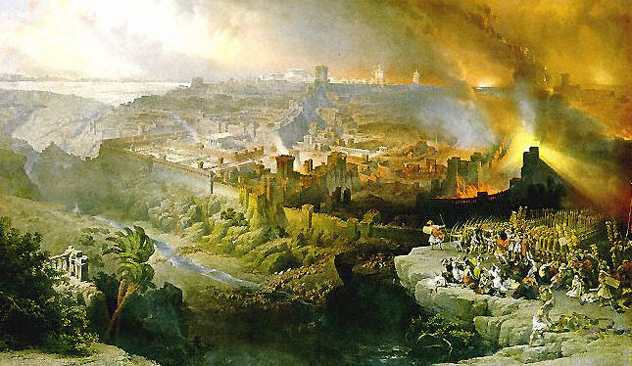
After a Jewish rebellion in 66 A.D., the Romans decided to quell the population once and for all. So Titus Flavius was sent with 70,000 men to siege the city, which had nearly 40,000 soldiers ready to defend it.
Surrounding the city with four legions in February, Titus tried to negotiate with the defenders, sending in the Jewish historian Josephus to talk with the leaders. However, he was wounded with an arrow, and the siege was on. The population of the city was slowly starved by the Roman blockade, and had to resort to eating whatever they could find, including leather and sewage. Some people even turned to cannibalism, with Josephus remarking on a mother who killed her own baby.
Eventually, the Roman forces breached the wall, utilizing a secret, late-night attack, and began slaughtering citizens as they marched through the city. A number of buildings were razed to the ground and looted, including the Second Temple, which was destroyed against Titus’ orders. Nearly all of the surviving civilians were rounded up and sold into slavery, although a large percentage of them were just murdered in the streets. By September 7, the city was officially under Roman control.
1 Siege Of Leningrad (1941–1944)
1,000,000–2,500,000 Killed
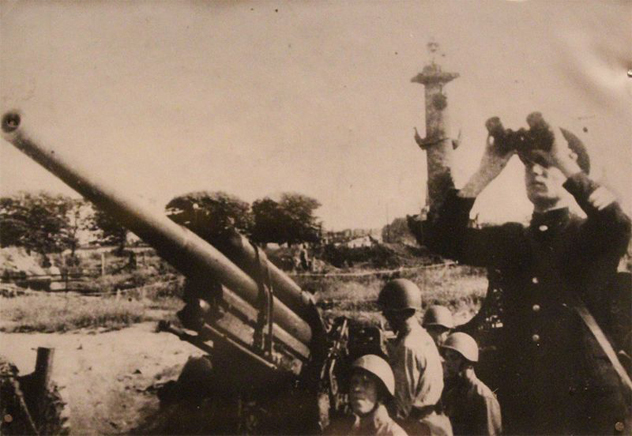
One of the deadliest and longest sieges in history took place in the Eastern Front during WWII. Pitting the German army against the Russian army, the Siege of Leningrad was nearly as destructive as the more well-known battle of Stalingrad. Beginning on September 8, 1941, the siege was especially hard on the civilian population, as the German blockade was successful in minimizing any food which could make its way to the city. By the end of the siege, the soldiers were rationed only a quarter of a loaf of bread per day.
However, the city persisted in the face of starvation, and the German army was kept at bay by the Russian forces. Luckily, the nearby waters of Lake Ladoga froze over during the winter, enabling supplies to be brought into the city. This entryway also offered the chance to evacuate the sick and elderly, leading to its nickname of the “Road of Life.” Eventually, the Russians forces from the East pushed the Germans back and lifted the siege of Leningrad, much to the relief of the surviving population.








